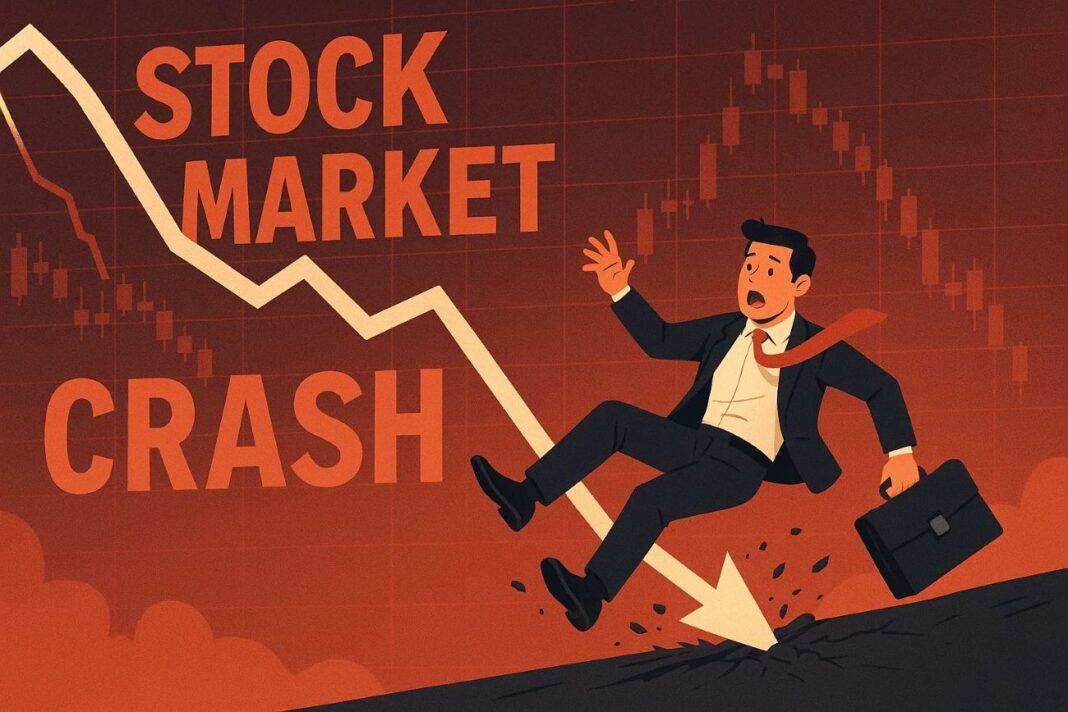Warren Buffett has an impressive track record, one that few investors can rival. Under his leadership, Berkshire Hathaway (NYSE: BRK.A) (NYSE: BRK.B) has delivered a remarkable 20% annual return since 1965, nearly doubling the annual gain of the S&P500 (SNPINDEX: ^GSPC). This achievement underscores his genius in capital allocation, whether by acquiring entire businesses or investing in stocks. It’s this foresight and strategic maneuvering that has transformed Berkshire into a trillion-dollar powerhouse.
However, a recent move by Buffett has sent ripples through Wall Street. Berkshire is sitting on a staggering $348 billion in cash and equivalents as of the first quarter, even with the S&P 500 dipping into correction territory in March. This accumulation of cash suggests that Buffett is finding it challenging to spot attractive stock deals, indicating a sharper downturn might be looming.
Market Warning: Historical Patterns and the CAPE Ratio
Historically, whenever the S&P 500 has hit its current valuation levels, a crash has followed. The cyclically adjusted price-to-earnings (CAPE) ratio, a metric by Nobel laureate Robert Shiller, helps gauge whether a market is overvalued. This ratio compares the current price of stocks to the average inflation-adjusted earnings of the past decade.
The S&P 500’s CAPE ratio stands at a daunting34.8, an expensive valuation that has been seen only 7.6% of the time since the index’s inception in 1957. These elevated levels have coincided with events like the dot-com bubble (1998-2001) and the COVID-19 pandemic (2021-2022), both of which resulted in market crashes. During these periods:
- Dot-com Bubble: The CAPE ratio surpassed 34 in February 1998 and remained high until May 2001. The outcome? A 49% decline in the S&P 500 as hype around internet companies fizzled.
- COVID-19 Pandemic: Starting January 2021, the CAPE ratio remained above 34 through March 2022. This period saw a 25% drop in the index, driven by surging inflation and the Federal Reserve’s aggressive interest rate hikes.
Historically, when the S&P 500’s monthly CAPE ratio exceeds 34, the average return over the next one, two, and three years has been negative. If history repeats its, the index could see lower levels three years from now.
Complicating Factors: Trade Policies and Economic Concerns
Further complicating the current scenario are policy shifts initiated by President Trump, which have introduced tariffs that many economists fear could elevate prices and slow down economic growth, potentially leading to a recession. Any economic data supporting these concerns could trigger another market downturn.
Silver Lining: Patience and Long-Term Investment
Yet, there’s a silver lining for patient investors. The S&P500 isn’t guaranteed to crash just because its CAPE ratio has peaked in the past. Current circumstances might defy historical trends. The CAPE ratio itself has trended upwards over recent decades, reflecting rising profit margins driven by innovations like the internet and artificial intelligence (AI). If these margins continue to grow, investors may tolerate higher valuations.
Despite facing several crashes over the last30 years, the S&P 500 has generated a massive 1,890% return, translating to an impressive 10.4% annually. This history suggests that even if a crash occurs soon, those who remain patient and steadfast in holding quality stocks can expect rewarding outcomes.
Should You Invest $1,000 in the S&P500 Index Now?
Before diving into the index with your hard-earned cash, consider the current landscape carefully. While the road ahead might look turbulent, patient investing has historically proven fruitful.




